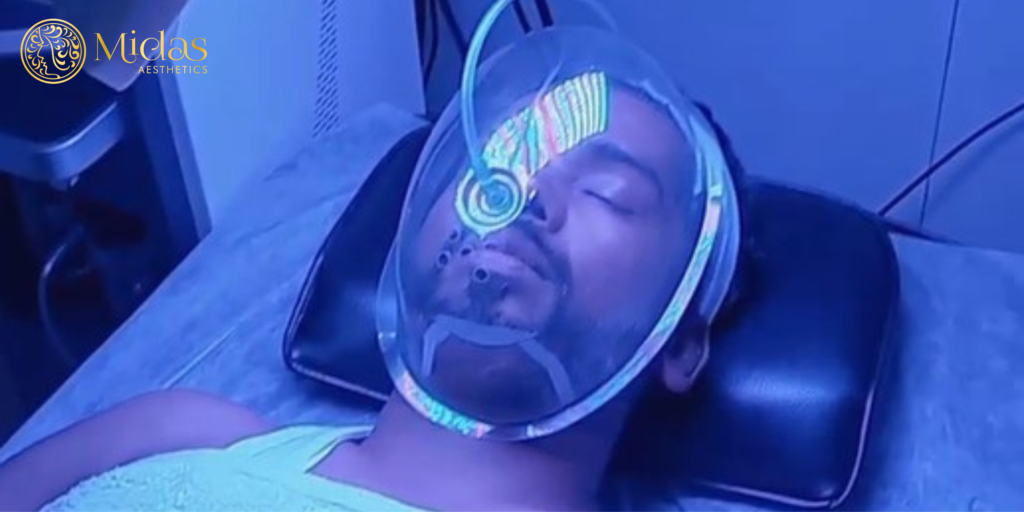
PRP vs Hair Transplant: Which Hair Restoration Treatment Is Right for You?

Hair loss is more than a cosmetic concern; it affects confidence, identity, and quality of life. And with modern hair regrowth treatments advancing fast, you’re no longer limited to cover-ups or myths. But here comes the tough choice: PRP for hair loss or a hair transplant?
Both have revolutionized hair restoration. But here’s what most people don’t know: Hair transplant is not a fit for everyone. And even if it is, it often needs follow-up care with PRP or GFC (Growth Factor Concentrate) sessions to truly work long-term. In this blog, we’ll break it all down so you can make the most informed choice.
What is PRP for Hair Loss?

PRP (Platelet-Rich Plasma) is a non-surgical, regenerative treatment that uses your body’s platelets to stimulate weak or dormant hair follicles. It involves drawing a small amount of blood, spinning it in a centrifuge, and injecting the concentrated plasma into thinning areas of the scalp.
These platelets are packed with growth factors that:
- Strengthen hair roots
- Increase blood supply to follicles
- Promote natural hair regrowth
Best For: Early-stage hair loss, thinning, and even post-transplant support.
People choose PRP treatment in India when they want a natural, low-risk way to revive hair growth. It’s especially effective in the early stages of thinning. Treatments are typically done in multiple sessions (about 3 to 6), followed by maintenance every few months.
What is a Hair Transplant?
A hair transplant is a surgical treatment where hair follicles are harvested from a donor area (usually the back of the scalp) and implanted in balding areas. Two main methods are used:
- FUE (Follicular Unit Extraction): Individual follicle extraction
- FUT (Follicular Unit Transplantation): Strip of scalp removed, dissected, and transplanted
Best For: Moderate to severe balding with a strong donor area.
Hair transplants are often seen as a one-time solution. However, many patients are surprised to learn that it’s not suitable for everyone. It works best for those with localized baldness and good donor hair. Also, follow-up care matters. To improve the success of a hair transplant, clinics often recommend PRP or GFC therapy post-procedure to:
- Support newly implanted grafts
- Speed up healing
- Reduce shedding
PRP vs Hair Transplant: Key Differences
- Invasiveness and Recovery
- PRP: Non-surgical. No downtime. Redness or swelling may occur briefly.
- Hair Transplant: Involves surgery. Requires rest, scalp care, and follow-ups. Recovery varies by technique.
- Results Timeline
- PRP: Gradual improvement. Visible effects in 2-3 months with full benefits after several sessions.
- Hair Transplant: Initial shedding occurs. Regrowth begins at 3-4 months. Final results take up to a year.
- Cost Breakdown
- PRP: Lower upfront cost but needs regular sessions. Costs accumulate over time.
- Hair Transplant: Higher initial cost. Still, requires PRP or GFC follow-up for best outcomes.
- Suitability by Hair Loss Stage
- PRP: Ideal for early-stage thinning and as maintenance after transplant.
- Hair Transplant: Not ideal for widespread or diffuse thinning without a strong donor area. Not everyone qualifies.
Why Hair Transplant Alone Isn’t Enough

Hair transplants give you visible density, but they don’t stop future hair loss. That’s why, after a hair transplant, the PRP sessions are required. This post-procedure therapy:
- Nourish the scalp
- Improve graft survival
- Enhance the overall look and longevity of the transplant
This combination approach is now considered standard in modern clinics.
Which Treatment Is Right for You?
Use this quick guide to evaluate your options:
Choose PRP Therapy if:
- You have mild to moderate hair thinning
- You prefer a natural, non-surgical approach
- You want to prevent further loss or support transplant results
Choose Hair Transplant if:
- You have clear bald patches and a strong donor area
- You’re looking for fuller coverage
- You’re ready for surgery and the recovery process
But remember: Hair transplant is not a magic bullet. Without follow-up support (like PRP or GFC), results may be compromised.
What to Expect at Midas Wellness Hub
At Midas Wellness Hub, we don’t believe in one-size-fits-all treatments. Our hair restoration plans are tailored to your specific needs.
Here’s what we offer:
- Digital scalp analysis to diagnose your hair condition
- Expert guidance on whether PRP, GFC, or transplant suits you best
- Combined therapy plans to improve success rates
- Ongoing support to protect your results
Our integrated approach gives you more than just visible improvement. We focus on long-term results, confidence, and scalp health.
Final Thoughts
Not everyone is a candidate for hair transplant surgery. And for those who are, a comprehensive care plan that includes PRP or GFC therapy is crucial for lasting results. Choose the treatment that suits your stage of hair loss, lifestyle, and long-term goals. And if in doubt, consult specialists who will guide you through a well-rounded path to hair restoration.

